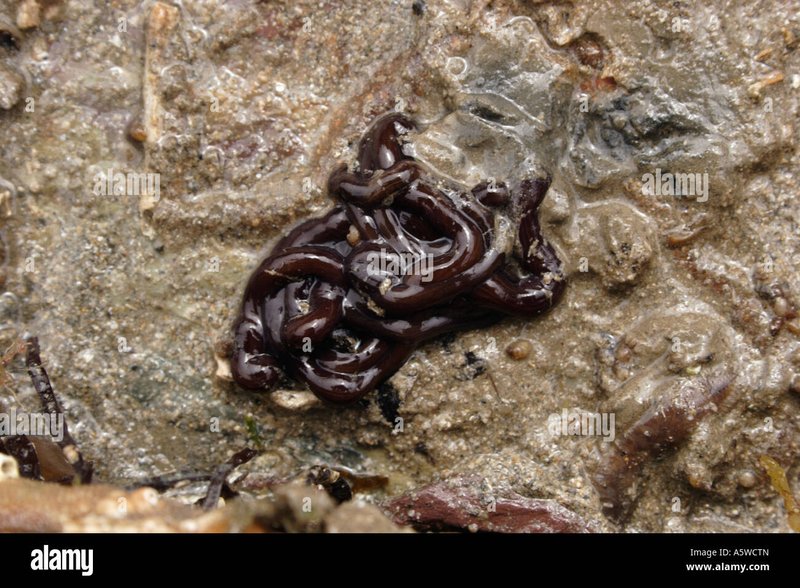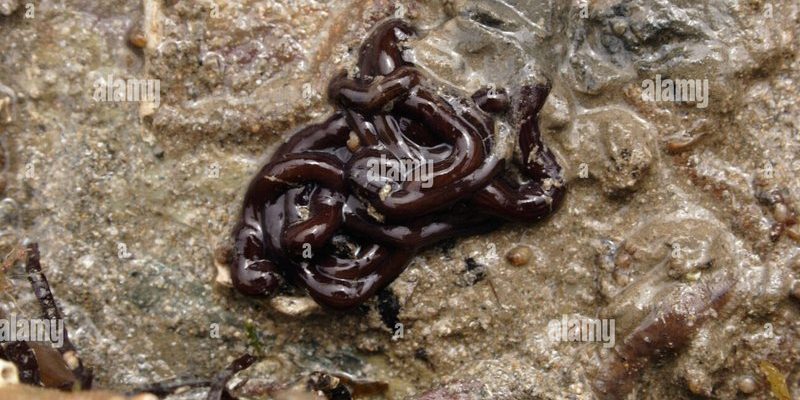
But what exactly are bootlace worms? They belong to the species *Lineus longissimus*, which can be a mouthful to say but is easier to understand when you think of them as the worms that can offer up some surprising insights into the marine ecosystem. These creatures hang out primarily in the sandy and muddy seabeds of British and European coastlines, blending in seamlessly with their surroundings. Let’s dive deeper into the world of bootlace worms and explore why they’re worth knowing about.
What Are Bootlace Worms?
Bootlace worms are a type of marine worm, specifically from the phylum Platyhelminthes, which means they’re flatworms. These creatures are known for their remarkable length and flexibility. They can grow anywhere from a few centimeters to an astonishing 10 meters long, but don’t let their size fool you. Despite their length, they are quite thin and often go unnoticed until they wriggle out of the sand.
What’s intriguing about bootlace worms is their **coloration**. While they can be a drab brown or green, many feature stunning patterns and vivid colors that can resemble a piece of abstract art washed up on the shore. This eye-catching appearance not only makes them interesting but also helps them camouflage against predators—an essential survival tactic in the wild.
When it comes to their habitat, bootlace worms are typically found in the **intertidal zones**—that’s the area of the shoreline between high and low tide. They prefer muddy or sandy substrates, where they can burrow in and hide from sight. You might be wondering, how do they fit into the larger picture of marine life? Let’s dig into their role in the ecosystem next.
Ecological Importance of Bootlace Worms
Bootlace worms might look unusual, but they play a vital role in the marine ecosystem. They help maintain the health of the seabed by aerating the sand and mud. Think of them as tiny gardeners of the underwater world. When they burrow, they create channels in the substrate, allowing water and nutrients to circulate more freely. This process benefits other marine life that relies on these environments.
Moreover, bootlace worms contribute to the food web. They serve as a food source for various predators, including fish and birds. By being part of the diet for these creatures, bootlace worms help maintain balance in the ecosystem. It’s like a chain reaction—without bootlace worms, the whole system could be affected.
Another fascinating point about these worms is their **regenerative abilities**. If they’re cut or injured, they can often regenerate lost segments of their bodies. This ability not only helps them survive in the harsh marine environment but also sparks research interest. Scientists are studying their regeneration to learn more about healing and tissue repair—an exciting twist for such simple-looking worms!
How Do Bootlace Worms Reproduce?
Reproduction in bootlace worms is as unique as their appearance. Unlike many other creatures, bootlace worms can reproduce both sexually and asexually, which is quite rare. When they reproduce sexually, they can exchange sperm with other worms, which allows for genetic diversity. This process is crucial for the health of their populations.
In contrast, when they reproduce asexually, they can simply split into two or more parts! Each piece can then grow into a new bootlace worm. This remarkable ability to reproduce in different ways allows them to thrive in various conditions. You might wonder just how common bootlace worms are. In the next section, we’ll explore their distribution along European coastlines.
Distribution Along British and European Coastlines
Bootlace worms can be found mostly in the colder waters of the North Atlantic Ocean, making British and European coastlines perfect homes for them. They’re often spotted along the sandy beaches of the UK, Ireland, and parts of Scandinavia. However, their presence isn’t limited to these areas. They extend their reach across a variety of coastal regions throughout Europe.
The abundance of bootlace worms in these areas is influenced by several factors, including water temperature, salinity, and availability of nutrients. You might find them more frequently in areas where the tide brings in nutrient-rich waters, creating a perfect feeding ground.
Interestingly, these worms are quite tolerant of varying environmental conditions. They can thrive in both high and low salinity levels. This adaptability makes them a resilient species, allowing them to flourish even as coastal environments face challenges from climate change and pollution.
Threats to Bootlace Worm Populations
Despite their resilience, bootlace worms face some significant threats in their habitats. Climate change is a big one. Rising sea temperatures and acidification can impact their survival. As temperatures increase, the delicate balance of marine ecosystems may shift, making it tougher for bootlace worms to thrive and reproduce.
Pollution is another concern. Coastal areas can be affected by runoff from agricultural practices, plastic waste, and other pollutants. These substances can degrade the quality of the water and the seabed where bootlace worms live. When their habitats are compromised, it creates a ripple effect that can impact not just bootlace worms, but many other species that share that environment.
Lastly, habitat destruction due to human activities like dredging and coastal development can further threaten their populations. As we build and expand, we encroach upon the natural habitats of countless marine creatures, including our long, squiggly friends.
How to Spot Bootlace Worms
If you’re eager to catch a glimpse of bootlace worms during your next beach visit, you’re in for a fun challenge! They tend to stay buried in the sand or mud, so you often need to look closely. When the tide is low, take a walk along the shoreline and keep an eye out for signs of movement or strange shapes in the sand.
A good technique is to watch for the water’s surface. Sometimes, bootlace worms will wiggle out briefly, especially if they sense danger or are disturbed. If you do spot one, be gentle. It’s essential to respect these creatures and their habitats.
Another way to encounter bootlace worms is through scientific exploration. Many research groups and amateur marine biologists often conduct surveys along coastlines to study marine life, including bootlace worms. Joining these excursions can provide an up-close experience and a deeper appreciation for these unique organisms.
Conservation Efforts and the Future of Bootlace Worms
With increasing awareness of the threats facing marine life, conservation efforts are also being directed toward creatures like bootlace worms. Protecting their habitats is crucial for ensuring their survival. Initiatives to clean up coastlines, reduce pollution, and monitor marine environments help create a safer haven for these worms.
Additionally, researchers are continuously studying bootlace worms to better understand their biology and ecology. This research can inform conservation strategies and policies aimed at preserving not just bootlace worms, but entire marine ecosystems.
Ultimately, safeguarding bootlace worms means realizing that every piece of marine life has its role to play. Protecting them helps to sustain the balance of the ocean, which is essential for the health of the planet. As we learn more about these creatures, we can appreciate how interconnected we all are in this grand ecosystem.
In conclusion, bootlace worms are much more than just odd-looking creatures resting on our shorelines. They play crucial roles in marine ecosystems, exemplifying the beauty and complexity of ocean life. By understanding and protecting them, we contribute to the health and resilience of our precious coastlines. So, the next time you’re at the beach, take a moment to appreciate these fascinating worms and the ecosystem they support. It’s a small step that has a big impact.

